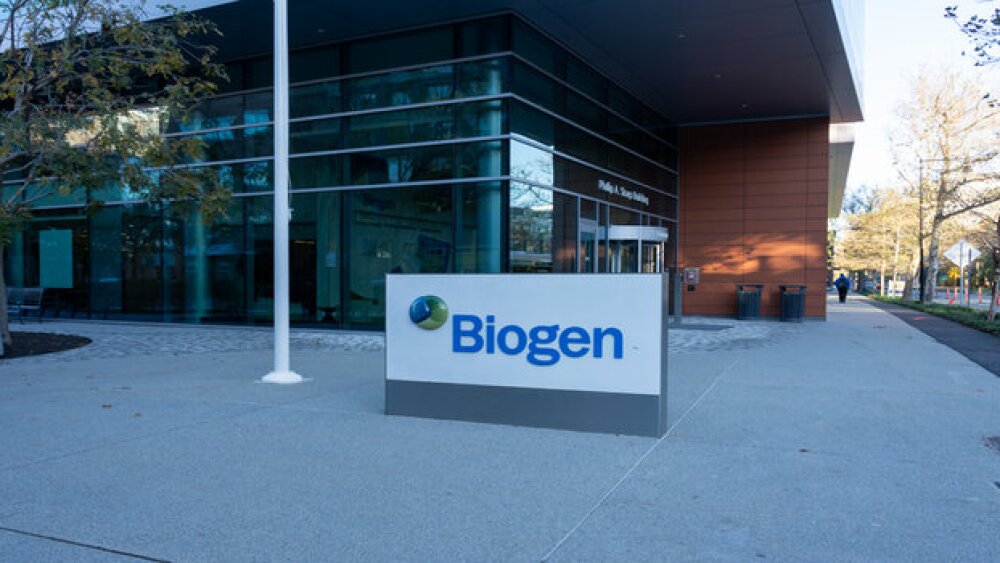The objective was to assess the respiratory function evolution during periods of treatment with idebenone
Pratteln, Switzerland, November 19, 2019 – Santhera Pharmaceuticals AG (SIX: SANN) announces publication of the previously reported SYROS study data in prominent peer-reviewed medical journal Neuromuscular Disorders [1], demonstrating long-term efficacy with idebenone in slowing respiratory function loss in patients with Duchenne muscular dystrophy (DMD) under routine clinical care.
The publication reports data collected as retrospective cohort study (SYROS) from 18 DMD patients not using glucocorticoids who were treated with idebenone (900 mg/day) under Expanded Access Programs (EAPs) after having completed the Phase III DELOS study. The objective was to assess the respiratory function evolution during periods of treatment with idebenone (‘On-Idebenone’) compared to periods without idebenone treatment (‘Off-Idebenone’) in the same patients. Respiratory function was measured as forced vital capacity (FVC) or peak expiratory flow (PEF), both expressed as percent of predicted (FVC%p, PEF%p).
- This study collected data from DMD patients receiving long-term idebenone treatment under routine clinical care for an average of 4.2 years (range 2.4 to 6.1 years) after completion of the DELOS study.
- In the patients who were ‘Off-Idebenone’ before the EAPs, the annual rate of decline in FVC%p (primary endpoint) was reduced by approximately 50% from -7.4% (95% CI: -9.1, -5.8) ‘Off-Idebenone’ to -3.8% (95% CI: -4.8, -2.8) ‘On-Idebenone’. Similarly, the annual rate of decline in PEF%p was reduced from -5.9% ‘Off-Idebenone’ to -1.9% ‘On-Idebenone’.
- The annual rate of decline in FVC%p and PEF%p remained stable year after year for the entire follow-up time of up to six years and was consistently lower than the decline in matched untreated patients from a natural history study.
- During ‘On-Idebenone’, the rate of bronchopulmonary adverse events was reduced (0.10 events per person-year) compared with ‘Off-Idebenone’ (0.33 events per person-year). Similarly, the rate of hospitalizations due to respiratory infections or related disorders was reduced under idebenone treatment (0.06 hospitalization events per person-year ‘On-Idebenone’ versus 0.15 ‘Off-Idebenone’).
“Reducing the annual rate of decline in respiratory function during idebenone treatment appears to be clinically relevant as it was associated with a smaller number of bronchopulmonary complications and hospitalization for respiratory events,” said lead author Laurent Servais, MD, PhD, Professor of Neuromuscular Paediatric Diseases at the University of Oxford (MDUK Oxford Neuromuscular Center, department of Paediatrics) and Head of the Neuromuscular Centre (Liège, Belgium). “Furthermore, a sustained reduction in the rate of decline in FVC%p indicates a potential therapeutic benefit during long-term treatment as it could result in a delay in the need of assisted ventilation.”
“Data from this long-term follow-up period in patients receiving idebenone under routine clinical care provide a highly valuable data set complementing the previously reported body of evidence, especially the positive Phase III DELOS trial [2]. The totality of available data demonstrate that idebenone preserves respiratory function and holds disease-modifying therapeutic potential,” said principal investigator and corresponding author Gunnar M. Buyse, MD, PhD, Professor of Pediatrics and Child Neurology, University Hospitals Leuven (Leuven, Belgium).
About Duchenne Muscular Dystrophy
DMD is one of the most common and devastating types of progressive muscle weakness and degeneration starting at an early age and leading to early morbidity and mortality due to respiratory failure. It is a genetic, degenerative disease that occurs almost exclusively in males with an incidence of up to 1 in 3,500 live male births worldwide. DMD is characterized by a loss of the protein dystrophin, leading to cell damage, impaired calcium homeostasis, elevated oxidative stress and reduced energy production in muscle cells. With age, progressive respiratory muscle weakness affecting thoracic accessory muscles and the diaphragm causes respiratory disease, impaired clearance of airway secretions, recurrent pulmonary infections due to ineffective cough, and eventually respiratory failure. There is currently no treatment approved for slowing loss of respiratory function in patients with DMD.
About Idebenone in Duchenne Muscular Dystrophy
Idebenone is a synthetic short-chain benzoquinone and a cofactor for the enzyme NAD(P)H:quinone oxidoreductase (NQO1) capable of stimulating mitochondrial electron transport, reducing and scavenging reactive oxygen species (ROS) and supplementing cellular energy levels.
DELOS was a Phase III, double-blind, placebo-controlled 52-week study which randomized 64 patients, not taking concomitant steroids, to receive either idebenone (900 mg/day) or matching placebo. The study met its primary endpoint, the change from baseline in peak expiratory flow (PEF) expressed as percent of predicted, which demonstrated that idebenone can reduce the loss of respiratory function [2, 3]. Further pre-specified and post-hoc analyses of the DELOS study outcome have been published [4-7].
References
[1] Servais L, et al. Long-term data with idebenone on respiratory function outcomes in patients with Duchenne muscular dystrophy. Neuromuscular Disorders 2019; DOI: https://doi.org/10.1016/j.nmd.2019.10.008
[2] Buyse GM, et al. Lancet 2015; 385:1748-57.
[3] Meier T, et al. Neuromuscular Disorders 2017; 27:307–14.
[4] McDonald CM, et al. Neuromuscular Disorders 2016; 26:473-80.
[5] Buyse GM, et al. Pediatric Pulmonology 2017; 52:508-15.
[6] Mayer OH, et al. J Neuromuscular Diseases 2017; 4:189-98.
[7] Buyse GM, et al. J Neuromuscular Diseases 2018; 5:419–30.
About Santhera
Santhera Pharmaceuticals (SIX: SANN) is a Swiss specialty pharmaceutical company focused on the development and commercialization of innovative medicines for rare neuromuscular and pulmonary diseases with high unmet medical need. Santhera is building a Duchenne muscular dystrophy (DMD) product portfolio to treat patients irrespective of causative mutations, disease stage or age. A marketing authorization application for Puldysa® (idebenone) is currently under review by the European Medicines Agency. Santhera has an option to license vamorolone, a first-in-class dissociative steroid currently investigated in a pivotal study in patients with DMD to replace standard corticosteroids. The clinical stage pipeline also includes POL6014 to treat cystic fibrosis (CF) and other neutrophilic pulmonary diseases, as well as omigapil and an exploratory gene therapy approach targeting congenital muscular dystrophies. Santhera out-licensed ex-North American rights to its first approved product, Raxone® (idebenone), for the treatment of Leber’s hereditary optic neuropathy (LHON) to Chiesi Group. For further information, please visit www.santhera.com.
Raxone® and Puldysa® are trademarks of Santhera Pharmaceuticals.
For further information please contact:
public-relations@santhera.com or
Eva Kalias, Head External Communications
Phone: +41 79 875 27 80
Disclaimer / Forward-looking statements
This communication does not constitute an offer or invitation to subscribe for or purchase any securities of Santhera Pharmaceuticals Holding AG. This publication may contain certain forward-looking statements concerning the Company and its business. Such statements involve certain risks, uncertainties and other factors which could cause the actual results, financial condition, performance or achievements of the Company to be materially different from those expressed or implied by such statements. Readers should therefore not place undue reliance on these statements, particularly not in connection with any contract or investment decision. The Company disclaims any obligation to update these forward-looking statements.




